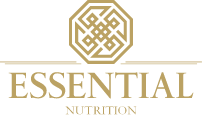

BE EXTRAORDINARY
We believe that everyone can be extraordinary.
We believe that being and feeling well are fundamental to our existence. Moreover, it was from that desire to honor and promote the entire potential of the human being that we combine in our products which awakes the best in us.
Innovation is part of human development and has a fundamental role in evolution. So we are always working to improve your experience with our products.
Can’t wait to see you again


Be the first to know when we are back.
Keep in touch